Conquering a Formidable Foe
Published on October 25th, 2016
The eighth Vendée Globe, which begins November 6 from Les Sables d’Olonn, France, is the only non-stop solo round the world race without assistance. For the 29 skippers and their IMOCA 60s, to complete the race they must conquer a formidable foe – Mother Nature…
This round the world voyage is above all a voyage through various weather systems involving sailing down the Atlantic, crossing the Indian and Pacific, before climbing back up the Atlantic. Starting from Les Sables d’Olonne in the middle of the autumn, the journey continues in the Southern Ocean in mid-Summer, before they get back to Vendée in the winter.
The distance of 21,638 nautical miles is the circumference of the Earth and the reference distance around the world. In reality, however, in the seven previous editions of the Vendée Globe, most of the competitors sailed more than 28,000 nm.
The sea is not a motorway. The sailors have to deal with wind, waves, swell, ice and the route taken by the boats is a jagged line with zigzags, detours and changes in direction. Usually a non-stop round the world voyage can be divided into six major parts with their own weather complications.
In practice, it is the Coriolis force linked to the world turning that gives rise to the movements of the weather patterns. In the Northern Hemisphere, the winds blow anti-clockwise around low-pressure systems and clockwise around highs, while it is the reverse in the Southern Hemisphere. Weather systems tend to move from west to east.
Disturbed areas move around the highs and sometimes push them away. In this round the world race, in each ocean and in each hemisphere, we find an area of high pressure, which due to its position, its size and movement directly influences the movement of the lows.
This battle between highs and lows regulates the climate in each part of the Vendée Globe. The journey from north to south down the Atlantic and the climb back up from south to north are perpendicular to the general movement of the disturbed systems, while in the Southern Ocean, crossing the Indian and Pacific involves sailing in the same direction as the weather systems.
In the first phase between Les Sables d’Olonne and the island of Tristan da Cunha, the solo sailors must try to avoid the lows circulating around the Azores high in the North Atlantic, and the St. Helena high in the Southern ocean.
The second phase involves taking advantage of weather systems moving in from the west to sail quickly from the Cape of Good Hope to the Horn, while the third part is rather like the first with the need to get around the St. Helena and Azores highs. But this pattern is complicated as they have to go from one hemisphere to the other, with this equatorial zone often offering variable and extremely irregular winds. This is the area known as the Doldrums.
On 6th November 2016, two situations can be imagined. Either the Azores high extends a ridge of high pressure to Vendée offering decent weather and downwind sailing to get out of the Bay of Biscay, or the Atlantic lows pile in between Newfoundland and Spain generating strong headwinds. This stretch between Les Sables d’Olonne and Cape Finisterre can be covered in just one day, or can be an extremely harsh start to the race.
Once the coast of Portugal is behind them, it is via the southern edge of the Azores high that the solo sailors slide towards the Cape Verde Islands. The difficulty here is deciding when to gybe towards the Equator, as if this is done too soon, the boats suffer in the disturbed air around the islands (Madeira, Canaries, Cape-Verde), or if they are too late, they risk getting stuck in the calms associated with the area of high pressure.
This key point to change bearing towards the south concerns the point of entry into the Inter-Tropical Convergence Zone or the Doldrums, usually located between 27° and 30° West. This entry point also determines the exit point. The NE’ly winds shift to SE on the other side of the Equator. The closer they are to Africa, the shorter the route to get around the St. Helena high…
The areas of high pressure in the South Atlantic can vary a lot in what is the spring in the south. The sailors will aim to sail as far off the coast of Brazil as possible to pick up one of the lows forming in the Bay of Rio, which will then disappear in the Indian Ocean.
If the high breaks up into small fragments, which come and go, the fleet can be split into small groups with very different weather systems and any hold up can ruin their chances. If you manage to catch a low coming out of Brazil, you can get a quick trip down to the Roaring Forties and speed away towards the islands in the deep south.
Once they have reached the Southern Ocean, the solo sailors have to deal with a series of low-pressure systems for a month or more. From the islands of Tristan da Cunha and Gough to Cape Horn, they have around 12,000 nm to sail along the wall of ice marking the limit of the ice drifting up from the Antarctic.
This is the toughest part in the rough seas of the Indian Ocean and the long Pacific swell. Once out of the grip of the Southern Ocean, they still have 7,000 nm left to sail up the coast of South America and then in the North Atlantic before they see the South Nouch Buoy marking the finishing line of the Vendée Globe…
In the space of barely one month, the competitors go from the cold Vendée weather to the torrid heat of the equator, tropical downpours and then back into the icy conditions of the Antarctic. The Southern Ocean represents nearly 3/5th of the round the world voyage with a series of low-pressure systems rolling out of Brazil, Madagascar and New Zealand.
It is this succession of downwind conditions that the sailors try to stick with, gliding from one system to another without getting swallowed up by the tentacles stretching out from the highs. From strong NW’ly winds, severe westerly squalls as the front passes over, then a shift to an icy SW’ly, these changes are very demanding for the solo sailors and their boats.
Today, icebergs are now avoided by the Race Directors, who have set up an ice exclusion zone around the Antarctic between 45°S near the Crozet islands and 68°S off Cape Horn. This zone implies a higher route flirting with the Mascarenes High (Indian Ocean) and Easter Island (Pacific Ocean).
Whilst there have never been any winning comebacks in the Southern Ocean in the seven previous editions, that may well change in this year’s southern summer, as the leader(s) could get stuck in a ridge of high pressure, while those chasing them could be taking advantage of a low-pressure system.
If rounding the Horn after more than fifty days at sea marks a huge drop in the levels of stress due to the lower risk of damage and the rise in temperature, the 7,000 nm that remain before returning to Les Sables d’Olonne are not that easy, particularly if other competitors manage to claw their way back into contention.
Once they have Patagonia in their wake, they have once again to get around the St. Helena high and deal with the stormy areas of low pressure pouring out of Brazil, which is synonymous with strong and variable headwinds, huge wind shifts and fronts to deal with. In other words, this is no easy task…
Then, they have the Brazilian coast more or less within sight before the Doldrums appear over the horizon. Here, they pass to the west of Fernando de Noronha, before picking up the E’ly winds associated with the Azores High. This area of high pressure can sometimes stretch out to the Caribbean, split into two areas, which move around, or shrink back to Europe.
In any case, the sailors have to avoid getting stuck in the calms before they finally get to the Atlantic lows, which in January can be even more horrendous than what they witnessed in the Southern Ocean.
At last, after between 75 and 80 days at sea, the winner of the 2016 Vendée Globe will finally be able to make out the South Nouch buoy marking the finishing line of the Vendée Globe off Les Sables d’Olonne.
The voyage should chiefly be sailed downwind, but for the first time in this eighth edition, there may be a rather different situation in the Southern Ocean, if the Indian and Pacific highs decide to block the solo sailors’ passage as they contend with the exclusion zone set up to avoid the ice from the Antarctic. To win, you have to make it all the way around.
Race details – Entries – Facebook – VendeeGlobe TV
Background:
The eighth Vendée Globe, which begins November 6 from Les Sables d’Olonn, France, is the only non-stop solo round the world race without assistance. Twenty-nine skippers representing four continents and ten nations will set sail on IMOCA 60s in pursuit of the record time set by François Gabart in the 2012-13 race of 78 days, 2 hours and 16 minutes.
For the first time in the history of the event, seven skippers will set sail on IMOCA 60s fitted with foils, which allow the boat to reduce displacement for speed gains in certain conditions. It will be a test to see if the gains can topple the traditional daggerboard configuration during the long and demanding race.
Source: Vendee Globe/Dominic Bourgeois/M&M


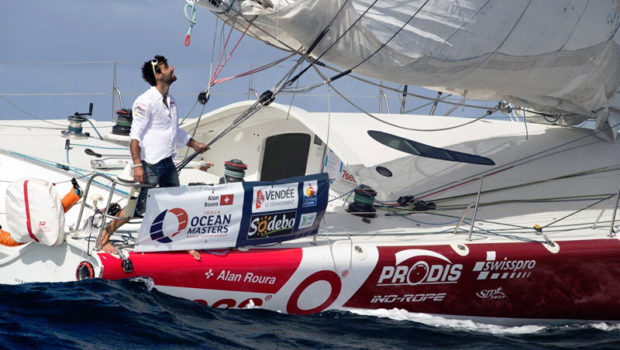

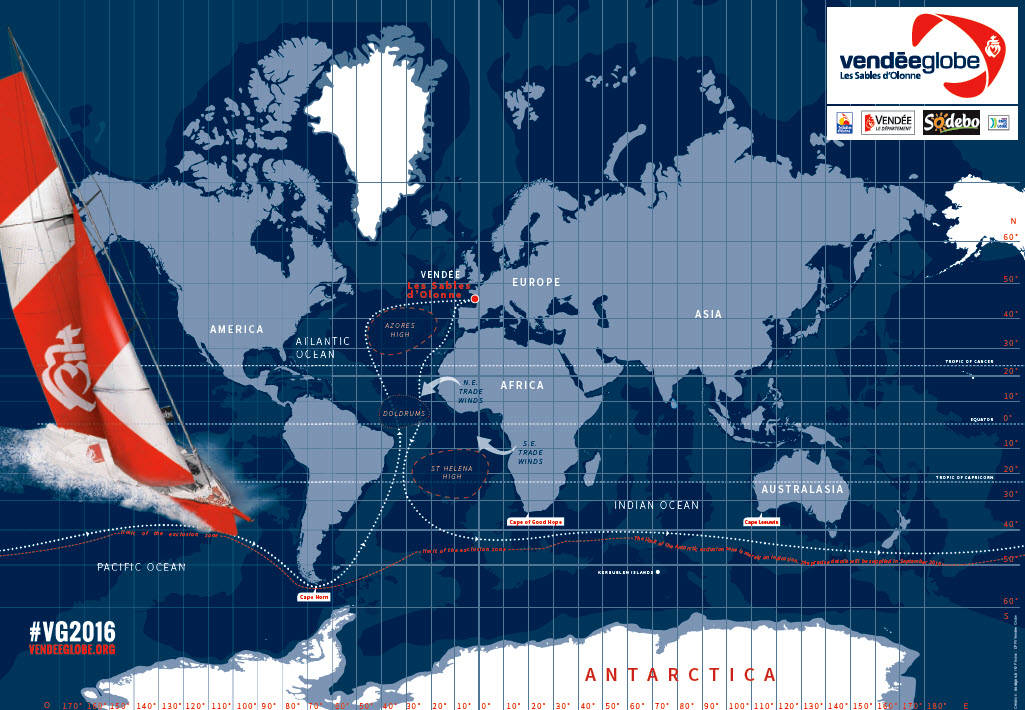

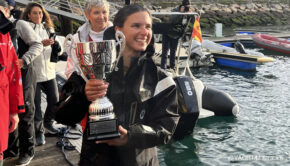
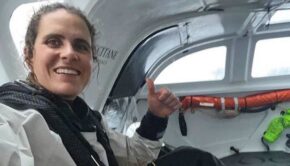
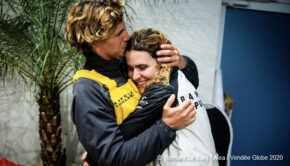
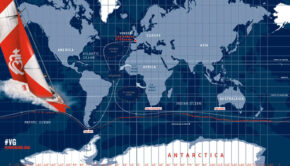
 We’ll keep your information safe.
We’ll keep your information safe.